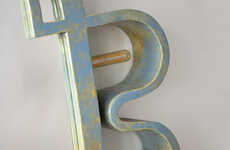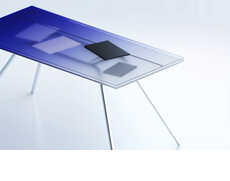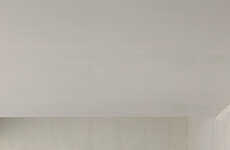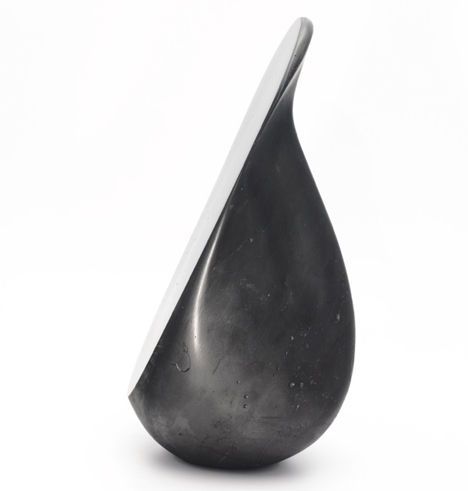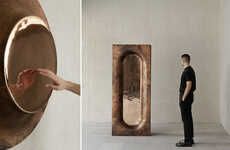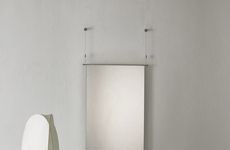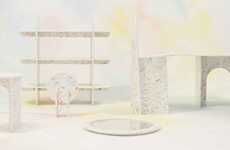
This Recycled Mirror Design is Sustainable and Edgy
Farida Helmy — April 27, 2014 — Eco
References: studiodrift & dezeen
The time has come to use chemical waste for good like these ingenious designers did to create their recycled mirror design.
Amsterdam-based designers Lonneke Gordijn and Ralph Nauta from Studio Drift recently unveiled their recycled mirror design at Milan Design Week 2014. The super sleek and reflective mirror is designed from synthetic glass that was recycled from chemical waste. Aside from creating an architectural design masterpiece, the creative duo wanted to experiment and prove that synthetic obsidian -- the glass-like material made during the chemical waste process -- can be used for a flurry of things. What makes this material awesome is the fact that it's recycle and sustainable.
"Synthetic obsidian is a new raw material, which is completely transformed on a molecular level into a safe and beautiful material," says Gordijn. "Because the material is made of chemical waste we wanted to refer to the most pure of things, something that is the opposite of waste."
Amsterdam-based designers Lonneke Gordijn and Ralph Nauta from Studio Drift recently unveiled their recycled mirror design at Milan Design Week 2014. The super sleek and reflective mirror is designed from synthetic glass that was recycled from chemical waste. Aside from creating an architectural design masterpiece, the creative duo wanted to experiment and prove that synthetic obsidian -- the glass-like material made during the chemical waste process -- can be used for a flurry of things. What makes this material awesome is the fact that it's recycle and sustainable.
"Synthetic obsidian is a new raw material, which is completely transformed on a molecular level into a safe and beautiful material," says Gordijn. "Because the material is made of chemical waste we wanted to refer to the most pure of things, something that is the opposite of waste."
Trend Themes
1. Recycled Materials - Using chemical waste to create sustainable and edgy designs opens up opportunities for utilizing recycled materials in various industries.
2. Circular Economy - The use of synthetic obsidian made from chemical waste demonstrates the potential for a circular economy where waste is repurposed into valuable resources.
3. Sustainable Design - The recycled mirror design showcases the potential for sustainable design practices by utilizing unconventional materials in a creative and innovative way.
Industry Implications
1. Architecture and Interior Design - The use of synthetic obsidian in the recycled mirror design introduces new possibilities for sustainable materials in the architecture and interior design industries.
2. Fashion and Accessories - The creativity behind the recycled mirror design presents an opportunity for fashion and accessories industries to explore innovative and sustainable material options.
3. Product Manufacturing - The use of chemical waste in the creation of synthetic obsidian mirrors highlights the potential for incorporating sustainable and recycled materials into various product manufacturing processes.
4.1
Score
Popularity
Activity
Freshness



